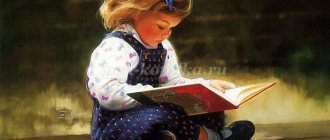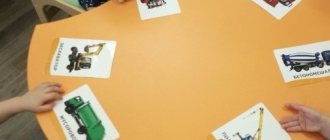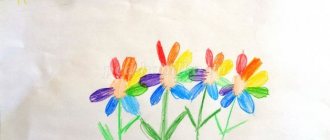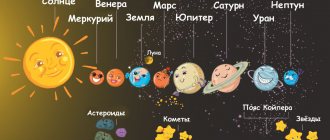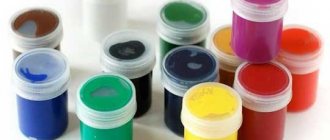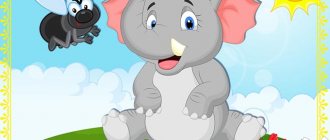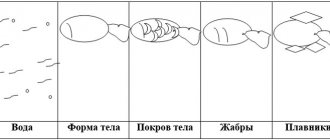Preview:
Lesson summary “What people drive”
Goal: to learn to depict various types of transport, their shape, structure, proportions; secure
the ability to place a drawing in the middle of a sheet, draw an outline with a simple pencil, and shade with colored ones; complement the drawing with characteristic details; bring your plan to completion.
Pictures depicting a variety of vehicles, a simple pencil, colored pencils.
Preliminary work: conversations: “What do people drive? ", "What kind of transport is there? " Reading and viewing children's encyclopedias "Cars", "Transport", reading works of art - N. Nosov "Car".
Q: Guys, many of you traveled with your parents, went on vacation, visited relatives.
Q: Let's remember what kind of transport there is? What do we drive on earth? (this type of transport is called land transport) What do we sail on? (this type of transport is called water transport) What can we use to fly through the air? (this type of transport is called air transport)
Now we know that there is land, water and air transport, i.e. we can drive a car along the road, sail on a boat on water, fly by plane in the air.
Guys, what do you think is the best way to go on a trip, what type of transport? (by car, because you can see a lot of interesting things, monuments, parks, nature, etc.).
Q: Guys, let's try to guess.
Listen to my riddle:
Doesn't fly, doesn't buzz,
A beetle is running down the street.
And they burn in the beetle's eyes
For the sparkling lights. (Car)
Yes, it's a car. We guessed the riddle. A car is a man’s faithful friend and assistant. It would be bad for a person without a car. What is a car for? (children's answers) I see you like to travel and ride cars. (Yes)
Consideration of vehicles (what they are made of, how many wheels, headlights, glass).
Q: Guys, do you want to try to make such interesting cars? (yes) Guys, the cars told me in my ear that there had never been an accident in this town. Do you know why? Because Svetofor-Svetoforovich keeps order here.
Q: Guys, you see from behind the tables, and now let’s play and check if you remember the words of Svetofor-Svetoforovich well. Red color - stand still, yellow color - clap their hands, green color - stomp their feet.
Q: Thank you guys, you will all follow the rules! And now, you and I will go to the workshop and depict various types of transport.
Q: Everyone turned out to have beautiful cars. Did you enjoy being masters? (yes) Now we each have our own cars, especially since we have repeated the rules of driving on the road, and of course the Svetoforovich traffic light will help us.
Preview:
Lesson summary “What people drive”
Goal: to learn to depict various types of transport, their shape, structure, proportions; secure
the ability to place a drawing in the middle of a sheet, draw an outline with a simple pencil, and shade with colored ones; complement the drawing with characteristic details; bring your plan to completion.
Pictures depicting a variety of vehicles, a simple pencil, colored pencils.
Preliminary work: conversations: “What do people drive? ", "What kind of transport is there? " Reading and viewing children's encyclopedias "Cars", "Transport", reading works of art - N. Nosov "Car".
Q: Guys, many of you traveled with your parents, went on vacation, visited relatives.
Q: Let's remember what kind of transport there is? What do we drive on earth? (this type of transport is called land transport) What do we sail on? (this type of transport is called water transport) What can we use to fly through the air? (this type of transport is called air transport)
Now we know that there is land, water and air transport, i.e. we can drive a car along the road, sail on a boat on water, fly by plane in the air.
Guys, what do you think is the best way to go on a trip, what type of transport? (by car, because you can see a lot of interesting things, monuments, parks, nature, etc.).
Q: Guys, let's try to guess.
Listen to my riddle:
Doesn't fly, doesn't buzz,
A beetle is running down the street.
And they burn in the beetle's eyes
For the sparkling lights. (Car)
Yes, it's a car. We guessed the riddle. A car is a man’s faithful friend and assistant. It would be bad for a person without a car. What is a car for? (children's answers) I see you like to travel and ride cars. (Yes)
Consideration of vehicles (what they are made of, how many wheels, headlights, glass).
Q: Guys, do you want to try to make such interesting cars? (yes) Guys, the cars told me in my ear that there had never been an accident in this town. Do you know why? Because Svetofor-Svetoforovich keeps order here.
Q: Guys, you see from behind the tables, and now let’s play and check if you remember the words of Svetofor-Svetoforovich well. Red color - stand still, yellow color - clap their hands, green color - stomp their feet.
Q: Thank you guys, you will all follow the rules! And now, you and I will go to the workshop and depict various types of transport.
Q: Everyone turned out to have beautiful cars. Did you enjoy being masters? (yes) Now we each have our own cars, especially since we have repeated the rules of driving on the road, and of course the Svetoforovich traffic light will help us.
Summary of GCD "What do people drive"
Lesson notes for the first junior group “What people drive”
Lesson notes for the first junior group No. 11. Educator: Pevtsova Daria Gennadievna.
Tasks
. Introduce children to various types of transport, teach them to distinguish by appearance, name parts, colors. Exercise children to run in one direction without bumping into each other. Perform movements according to the teacher’s verbal signal.
Preparation for class
. Toys: steam locomotive, car, plane, squirrel, hedgehog, hare. Napkin.
Progress of the lesson
. Children sit on chairs.
Educator
puts on the table, covered with a scarf, a car, an airplane, a steam locomotive.
Educator
. Children, I have a handkerchief on my table, and there’s something hidden under it, do you want to know what’s there?
Children
. Yes! They are called toys.
Educator
He lifts his handkerchief and looks at the car, locomotive and airplane together with the children.
Educator.
About them, in one word we can say this is transport.
Educator
. What is transport needed for? Let's all repeat this word "transport" together.
Children.
To travel, to carry cargo.
Educator
. Now you and I will play the game “Guess what’s missing.” I’ll cover our toys with a napkin and put one away. And you tell me what is not. The teacher quietly removes one toy, opens the napkin, and the children guess what is missing. Along the way, he gets settled with the children, the train sped off, the plane took off, the car drove away.
Educator
. Children, we have a train, but what does it lack?
Children.
Carriages
Educator
. Let us attach trailers to our locomotive
(children play with a train with carriages - they roll it along the railway)
Educator
. How does the locomotive sound? (Too-too-too)
I'm going, I'm going, I'm going here and there
And the carriages knock, and the carriages talk
So so so. So so so.
Educator
. Our train has rushed to the airport, get off. At the airport, planes are preparing to fly. We are airplanes, we start the engines (children make circular movements with their arms in front of their chests). The engines started humming oo-oo-oo. the planes showed their wings, shook them, and flew. Children fly around the room, saying the words together with the teacher:
We'll build the plane ourselves
Let's fly over the forests
Let's fly over the forests
And then we'll go back to mom.
Educator
. The planes are landing, we have landed, we have a rest, we start the engines, we fly (the words are pronounced again), we land on the chairs.
Educator. Children, while we were flying, little animals came to visit us: a bunny, a squirrel and a hedgehog. They told me that they wanted to go for a ride in the car. Our car is beautiful - the cab is yellow, the body is red, and the wheels are black.
re-enactment
. A car pulled up, the cab was yellow, the body was red, and the wheels were black. The animals have never seen such a beautiful car. And they wanted to ride it. A bunny jumped into the back, a squirrel jumped in, and the hedgehog jumped and jumped, but couldn’t jump to the back, his legs were short. I sat down and cried bitterly, I really wanted to go for a ride in the car. The squirrel and the bunny looked at him. They felt sorry for the hedgehog, a squirrel jumped out of the back, took the hedgehog, sat him down, and the bunny gave his paws to the hedgehog and the hedgehog ended up in the back, the squirrel jumped into the back again, and the car drove off. The cab is yellow, the body is red, and the wheels are black. The car goes forward and backward, forward and backward, the animals are having fun. The car stopped, the squirrel jumped off, the bunny jumped off, and they helped the hedgehog get out. Happy animals, we took a ride in the car. The cab is yellow, the body is red, and the wheels are black.
Summary of GCD for drawing in the preparatory group “What people travel on”
Elena Tashkinova
Summary of GCD for drawing in the preparatory group “What people travel on”
Goal: to develop the ability to depict various types of transport, their shape, structure, proportions.
- consolidate the ability to place an image in the middle of a sheet, easily draw an outline with a simple graphite pencil and paint over it with colored pencils;
- develop the ability to complement a drawing with characteristic details, bring the idea to completion, and evaluate your work;
- cultivate independence and accuracy in work;
- cultivate a friendly, respectful attitude towards each other, mutual respect.
Preliminary work: looking at illustrations of various vehicles, conversation “What do people drive ?”
, reading fiction about transport, asking riddles about various types of transport.
Materials: Pictures depicting a variety of vehicles, album sheets, simple graphite and colored pencils for each child.
